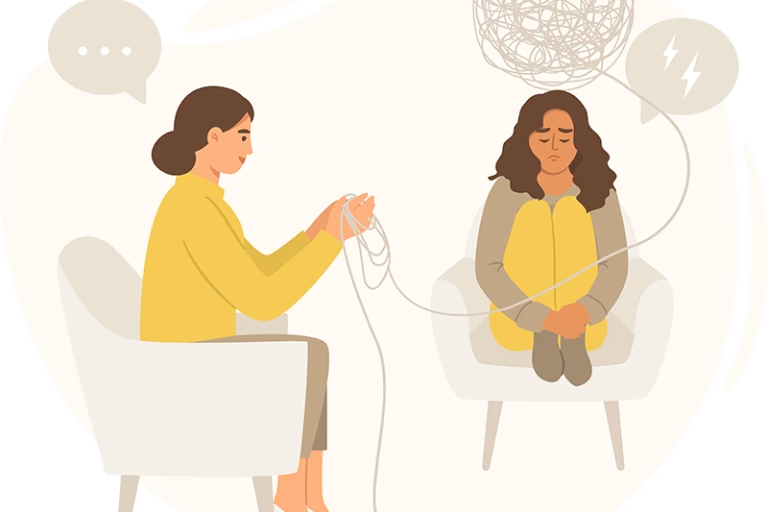Obsessive-Compulsive Disorder (OCD) is a complex mental health condition that affects millions of people worldwide. Despite its prevalence, there are numerous misconceptions surrounding OCD that often lead to misunderstanding and stigmatization. In this comprehensive discussion, we will be taking the task of understanding obsessive-compulsive disorder by debunking common myths and sheding light on the realities of living with this condition, including aspects such as intrusive thoughts, avoidance, behavioral avoidance, anxiety, and rituals, both physical and mental.
Defining OCD: Unraveling the Complexity
At its core, OCD is a chronic mental health disorder characterized by persistent, unwanted thoughts (obsessions) and repetitive behaviors or mental acts (compulsions). These obsessions and compulsions can significantly interfere with a person’s daily life, relationships, and overall well-being.
Myth #1: OCD is Just About Being Clean and Organized
While some individuals with OCD may have obsessions related to cleanliness or organization, OCD can manifest in various forms. Intrusive thoughts are unwanted, involuntary thoughts, images, or urges that cause significant distress. These thoughts can be disturbing, graphic, or taboo, leading to intense anxiety. Compulsions, which can be both physical and mental, are repetitive behaviors or mental acts performed in response to obsessions. Physical rituals include actions like washing or checking, whereas mental rituals might involve praying or counting silently.

Myth #2: People with OCD Are Just Perfectionists
Although perfectionism is a common trait among individuals with OCD, it’s essential to recognize that OCD goes beyond the desire to be perfect. People with OCD often experience intense anxiety and distress due to their obsessions, leading to the performance of compulsions in an attempt to alleviate these feelings. The cycle of obsessions and compulsions can be incredibly distressing and time-consuming.
Myth #3: OCD is Rare
Contrary to popular belief, OCD is not rare. It is estimated that approximately 1-2% of the global population suffers from OCD, making it more common than many people realize. OCD ranks among the top 20 causes of illness-related disability worldwide, according to the World Health Organization.
The Reality of Living with OCD
Living with OCD can be challenging, but with proper treatment and support, individuals with OCD can lead fulfilling lives. Cognitive-behavioral therapy (CBT) and exposure and response prevention (ERP) therapy are the most effective evidence-based treatments for OCD. These therapies help individuals confront their fears, both physical and mental, gradually reducing the need for compulsive rituals.
Breaking the Stigma: How We Can Help
Breaking the stigma around OCD starts with education and understanding. By dispelling myths and promoting accurate information, we can create a more compassionate and supportive society for individuals living with OCD. Encouraging open conversations, supporting mental health organizations, and being empathetic listeners are crucial steps in fostering a stigma-free environment.
Conclusion: Empathy, Understanding, and Support
Understanding Obsessive-Compulsive Disorder as a multifaceted condition involving intrusive thoughts, avoidance, behavioral avoidance, anxiety, and various rituals, both physical and mental, is the first step toward supporting those affected by it. By embracing empathy, dispelling myths, and promoting mental health awareness, we can contribute to a world where individuals with OCD receive the understanding and support they need to thrive. Together, we can break the stigma surrounding OCD and create a more compassionate society for everyone.
Ready to begin? Start your online therapy journey today. Book your first session now.




